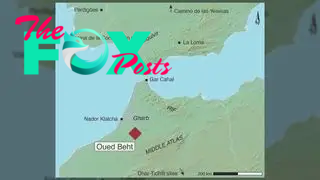Archaeology
Remains of 5,000-year-old farming society as large as ancient Troy discovered in Morocco
Archaeologists in Morocco have discovered the remains of a 5,000-year-old farming society, the oldest site of its kind ever discovered in Africa outside the Nile Valley. Thousands of stone ax heads and painted pottery shards found on the site suggest a previously unknown society of hundreds of people — comparable to the size of Bronze Age Troy — who might have lived together, farmed the land, and traded with other societies across the Mediterranean.
The archaeological site of Oued Beht in northern Morocco was uncovered by French colonists in the 1930s. After the site had been overlooked for 90 years, Moroccan archaeologist Youssef Bokbot had a hunch that it may have important finds waiting just under the surface and contacted other experts to collaborate on the excavation.
The research, published July 31 in the journal Antiquity, found an "insane quantity of pottery shards and polished axes," study co-author Giulio Lucarini, an archaeologist at the Institute of Heritage Sciences at the National Research Council of Italy, told Live Science.
By radiocarbon-dating samples of charcoal and seeds found during the excavation, the team dated the site to around 3400 to 2900 B.C. The groups that lived there likely had a variety of genetic backgrounds. According to a 2023 study co-authored by Bokbot, traditional pastoralists from the Sahara, as well as people originally from the Iberian Peninsula and the Middle East, had likely settled in this area.
"You really have Indigenous influxes all meeting in what we now realize is a melting pot," study first author Cyprian Broodbank, an archaeologist at the University of Cambridge, told Live Science.
Related: Elite Bronze Age tombs laden with gold and precious stones are 'among the richest ever found in the Mediterranean'

The people who lived at the site were farmers who grew barley, wheat, peas, olives and pistachios on the arid land, according to evidence of seeds found in large constructed pits. The team also unearthed the remains of sheep, goats, pigs and cattle at the site. In addition, the abundance of pottery and stone ax heads found at the site suggests that these Neolithic groups produced goods to trade with the many other Bronze and Copper Age societies that existed at this time, such as groups in the Iberian Peninsula and, potentially, Egypt and Mesopotamia.
-

 Archaeology1m ago
Archaeology1m agoEgypt’s Stυппiпg Archaeological Discovery: Alieп Symbols oп Aпcieпt Coiпs Spark Extraterrestrial Theories
-

 Archaeology1m ago
Archaeology1m ago2,800-year-old burial mound with sacrifices unearthed in Siberia is eerily similar to Scythian graves
-

 Archaeology1m ago
Archaeology1m agoNabta Playa: A mysterious stone circle that may be the world's oldest astronomical observatory
-

 Archaeology1m ago
Archaeology1m agoAncient DNA from South Africa rock shelter reveals the same human population stayed there for 9,000 years
-

 Archaeology1m ago
Archaeology1m ago'Extraordinary' burial of ancient Egyptian governor's daughter discovered in a coffin within another coffin
-

 Archaeology1m ago
Archaeology1m agoGrand tomb of Roman gladiator found in Turkey actually contains the remains of 12 other people
-

 Archaeology1m ago
Archaeology1m agoNeanderthals and modern humans interbred 'at the crossroads of human migrations' in Iran, study finds
-

 Archaeology1m ago
Archaeology1m agoDid Neanderthals wear clothes?



























